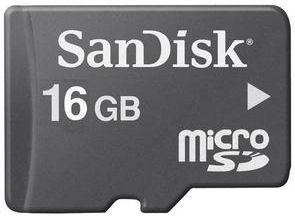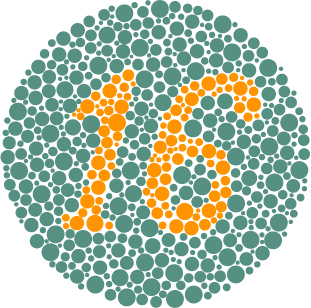Mathematics and Multimedia Blog Carnival #16
By Murray Bourne, 24 Oct 2011
This is the "coming of age" edition of the Mathematics and Multimedia Blog Carnival. Here are some (customary & mandatory) factoids about the number 16:
- In many countries, 16 is the age of consent, and the age where young people can get a license to legally control a 1-tonne projectile. Also, sixteen happens to be the age of many of our students.
- In Chinese and Japanese, where numbers are written more logically than in European languages, "16" is made up of "10" plus "6", as follows:

Chinese characters for "16"
- Sixteen is the sum of the first 4 odd numbers.
- Sixteen is the base for the hexadecimal number system, used extensively in computing. Here is the number 16 written using hexadecimal numbers: 1016.
On with the show.
(I'm using the topic headings as decreed in the Mathematics and Multimedia Blog Carnival manifesto.)
Mathematics teaching
(1) Bon Crowder of Math is not a Four Letter Word has written an interesting thought piece on the difference between motivating and inspiring students, in:
Are You Teaching Math Through Motivation or Inspiration?
(2) Denise in Let's Play Math! says "Let’s look at two common mental models — partitive division and measurement division — to see how the sister could have divided her pie…" in:
How to Understand Fraction Division
(3) Colleen Young (who has a "keen interest in how new technologies can deepen the learning experience for students") has begun a new blog aimed at students. She's right - most math blogs preach to the choir - it's about time there were more blogs addressed to students.
(4) And finally in this section, here are my suggestions (right here in squareCircleZ) on:
How to make math class interesting?
Technology integration
John Golden, of MathHombre, was inspired by a Dor Abrahamson video to create a GeoGebra app which helps students understand fractions. Here it is:

16 GB MicroSDHC card
Mathematics
(1) Natasha wrote an article in eIMACS about a professional mathematician in:
IMACS Alumni Profile: Dan Dugger, Mathematician
(IMACS is the Institute for Mathematics and Computer Science, an independent teaching and educational research institute.)
(2) Earl Samuelson (of samuelson mathxp's posterous) submitted 3 articles for this Carnival. In the first, he outlines graphical, algebraic and logarithmic approaches to solving exponential functions
Solving Exponential Equations: "Various Perspectives"
(3) In the second article, entitled "Carpe Diem" (seize the day), Earl writes an interesting exposition involving the math of time measurement:
(4) Guillermo P. Bautista Jr. (the father of this blog carnival) in Mathematics and Multimedia presents:
Subset: a set contained in a set
Math connections
Erlina Ronda at Mathematics for Teaching explains how to find the number of shortest paths on a chess board, in Connecting Pascal's triangle and permutations with identical objects

Color-blindness test [Image source]
Real life math
(1) John Cook of The Endeavour gives us a curve with an interesting property, in:
(2) Earl Samuelson was moved by the same Dor Abrahamson video that inspired John Golden. Here is Earl's third submission for this carnival:
(3) Katie Sorene of TripBase gives us the second list in a series of mathematically interesting buildings, in:
Most Mathematically Interesting Buildings in the World
The next Mathematics and Multimedia Blog Carnival
Carnival #17 will be hosted by Mathematics for Teaching on 28 Nov 2011.
See the 11 Comments below.
24 Oct 2011 at 2:34 pm [Comment permalink]
It is one of the major achievements of "Western" mathematics that 16 is NOT written as 10 and 6. Otherwise, I appreciate the many efforts to teach math more emotionally.
24 Oct 2011 at 3:19 pm [Comment permalink]
Thanks for including my 'Hello Students!'
What a wonderful variety of submissions here.
24 Oct 2011 at 4:24 pm [Comment permalink]
Thanks you very much for hosting. I am going to make an announcement tomorrow.
24 Oct 2011 at 7:14 pm [Comment permalink]
Thank you for including our post.
- Terry Kaufman, IMACS
25 Oct 2011 at 12:04 am [Comment permalink]
[...] The 16th edition of the Mathematics and Multimedia Blog Carnival is now live at Square Circle Z. The Math Teachers [...]
25 Oct 2011 at 10:43 pm [Comment permalink]
@Rene - It's not at all "achievements of “Western” mathematics" - it's "achievement of the "Eastern" mathematics". The numbers which you are using today are not called "Arabic numerals" just like that. They are arabic!
27 Oct 2011 at 5:52 pm [Comment permalink]
[...] Carnival 16 at SquareCircleZ [...]
28 Oct 2011 at 10:19 pm [Comment permalink]
@Rene Philip Petrov : It's not even "Arabic". It is Indian system. It was called Indo Arabic since west got it through them.
29 Oct 2011 at 8:26 pm [Comment permalink]
hi, thanks for including my post. great collection you got here.
31 Oct 2011 at 12:04 am [Comment permalink]
[...] Math and Multimedia Carnival #16 [...]
3 Nov 2011 at 9:38 am [Comment permalink]
[...] SquareCircleZ who hosted the 16th Mathematics and Multimedia Blog Carnival. [...]